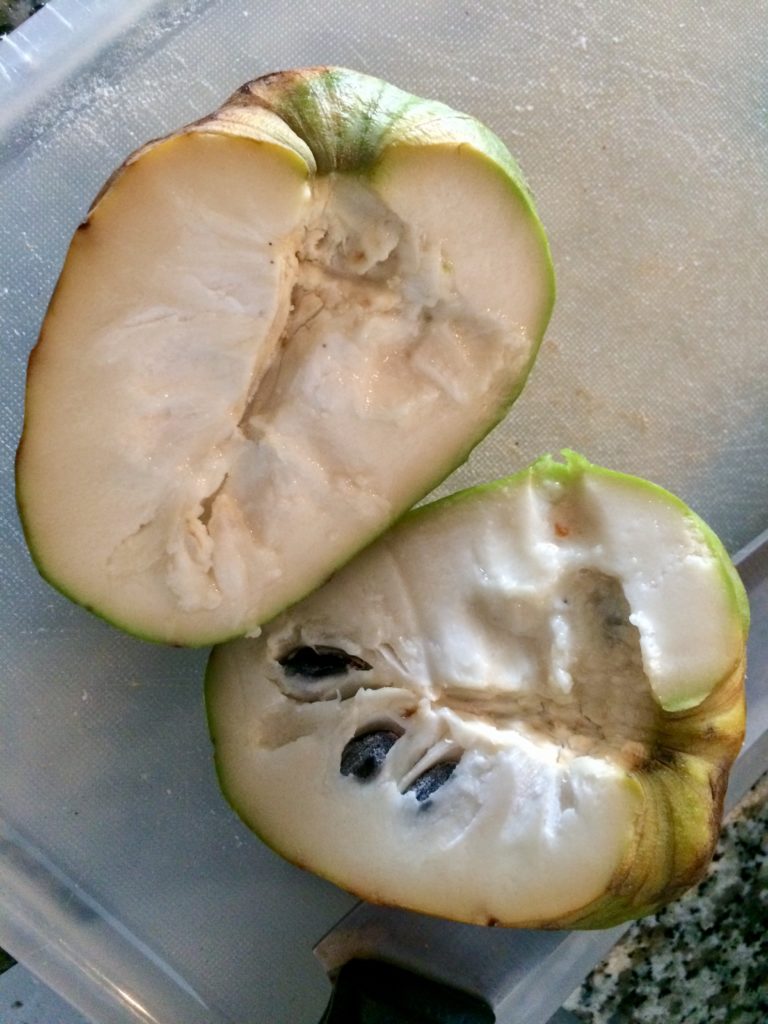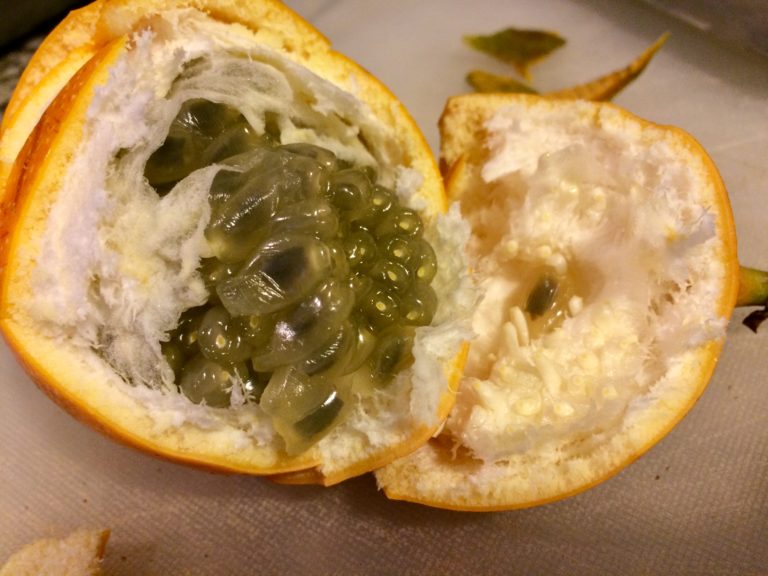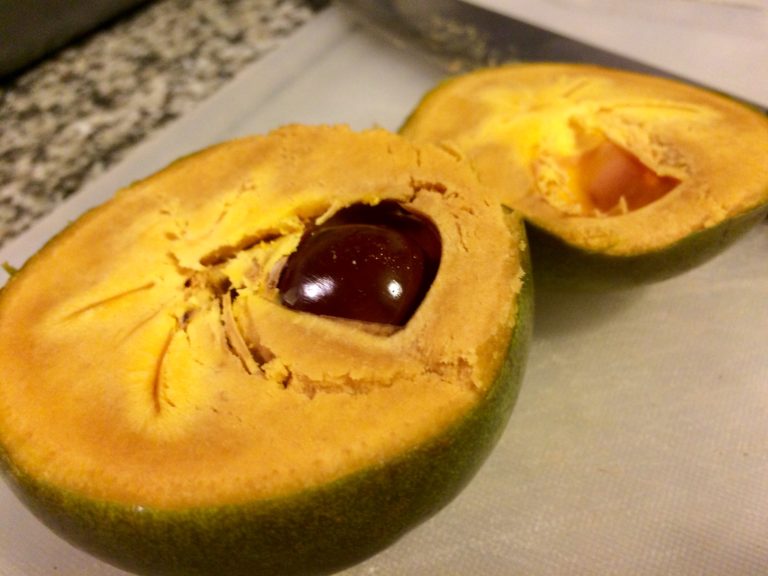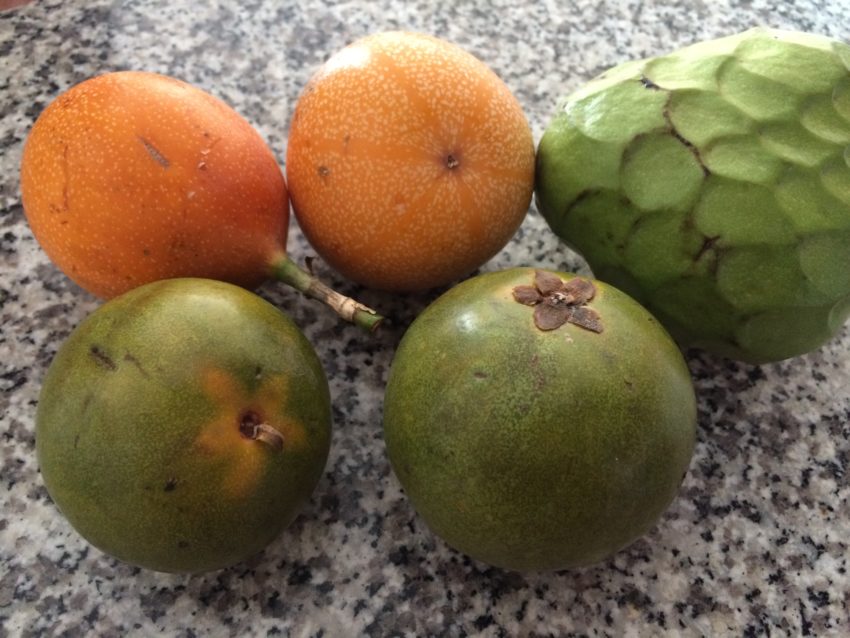One of the things we made a point to do last week at the Mercado de Magdalena was to pick up fruits that we’d been told we must try while in Peru — cherimoya, granadilla, and lúcuma. These fruits are native to Peru though they can be found in a few other countries in South America, according to Wikipedia.
Trying new fruits is never a hardship, so we loaded up and waiting for things to ripen.
Cherimoya

My first introduction to cherimoya was actually an episode of Chopped. Having watched Ted rave about the danger, I knew to not eat the seeds because they might kill you. How poisonous are they? I dunno, maybe they’re deadly like apple seeds are and you’d have to eat bags of them before you keel over. They’re pretty large, so it wasn’t hard to dig them all out. Safety first.
As you can see from the top picture, this fruit looks a little bit like a dinosaur egg on the outside. If they’re firm when you buy them, just give them a few days on the counter until they soften up. I was able to peel off the outer rind with a spoon.
Cherimoya has the nickname “custard apple,” though I think the texture is more like a pear. There’s a grittiness in the flesh that’s not unpleasant, just not custard-y smooth. It has a lot of sweetness upfront with a candy lime after-taste that lingers.
Granadilla

Ripe granadillas look a little bit like smallish, smooth oranges, which may explain why we had some difficulty spotting them on fruit stands. We had no idea how to eat them or when to know they were ripe, so we turned to Youtube for a primer. I’m happy that others have laid the groundwork for us!
Basically, you crack these suckers open and then peel off the rind. The inner pith separates from the gelatinous seeds pretty easily, or you can just hold the pith and let the seeds drop into a bowl. Either way, it’s easy. We ate the seeds with a spoon, but I can see slurping them down out of the rind.
This was the most unique thing I’ve tasted yet. The seeds have a light, floral sweetness that dissolves into a crunchy tartness on the back end. Jan thinks they might be good over yogurt, so we’re going to pick up some more to try for a future breakfast.
Lúcuma

The lúcuma looks a little like a lime on the outside, though rounder. We waited until we could softly squeeze it and then split it open like an avocado. We each took a half and scooped out the guts with a spoon.
In taste and texture, lúcuma reminds me of cooked sweet potatoes, which is a weird thing to say about a fruit. They’re dry in texture, so I see why people don’t sit around munching them like apples. In fact, they’re often sold in powder form to use as a sweetener or spun down into ice cream. I plan to try substituting them for the potatoes in sweet potato pie. Why not?
There were a few other strange fruits we spotted in the markets, so I’ll report back as we gather the goods. But what we’ve found so far? Aces. Give it a go if you make it this far south.
